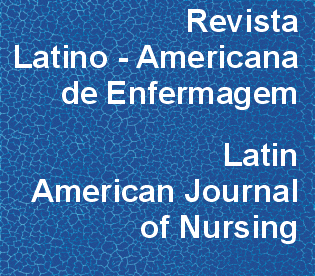Connection between competence, usability, environment and risk of falls in elderly adults
DOI:
https://doi.org/10.1590/0104-1169.0331.2659Abstract
Objective: to determine connections between competence, usability, environment and risk of falls in elderly adults. Method: correlational descriptive study, 123 elderly adults, both male and female, aged 70 years and older were included. Data was collected via the Tinetti Scale, CESD-7 Scale, Montreal Cognitive Assessment, Usability Questionnaire on Housing and Housing Enabler; and sociodemographic and health background certificate data. For data analysis, descriptive and inferential statistics were used, multivariate linear and logistic regression models were adjusted. Results: 42.0% of the elderly adults had presented with falls, with a higher prevalence in women, and in the group of 70-75 years. The physical environment of the house, gait, and usability were set as risk factors for falls. A negative relationship between usability and depressive symptoms, cognitive health, balance, gait, the social and physical environment was found, p <0.05; and a strong positive correlation between walking and balance, p <0.05. Conclusion: this study helps to better understand the phenomenon of falling, to find a connection between usability with the risk of falls, and other variables.Downloads
Download data is not yet available.
Downloads
Published
2015-12-01
Issue
Section
Original Articles
License
RLAE’s authorship concept is based on the substantial contribution by each of the individuals listed as authors, mainly in terms of conceiving and planning the research project, collecting or analyzing and interpreting data, writing and critical review. Indication of authors’ names under the article title is limited to six. If more, authors are listed on the online submission form under Acknowledgements. The possibility of including more than six authors will only be examined on multicenter studies, considering the explanations presented by the authors.Including names of authors whose contribution does not fit into the above criteria cannot be justified. Those names can be included in the Acknowledgements section.
Authors are fully responsible for the concepts disseminated in their manuscripts, which do not necessarily reflect the editors’ and editorial board’s opinion.
How to Cite
Connection between competence, usability, environment and risk of falls in elderly adults . (2015). Revista Latino-Americana De Enfermagem, 23(6), 1139-1148. https://doi.org/10.1590/0104-1169.0331.2659



